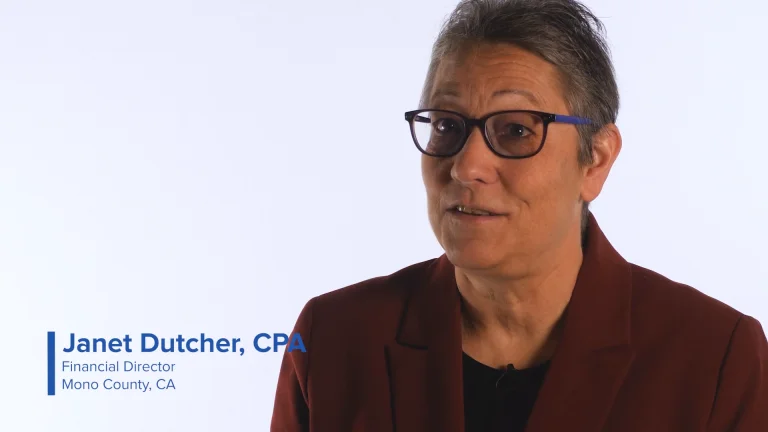5 Key Considerations for Effective and Efficient Government Personnel Planning
One of the largest expenses for every government is the people that it employs. It’s also one of the most complicated areas of budgeting, planning and scenario analysis. Budgeting and Planning leaders are presented with a three-headed monster of variability, complexity, and outdated technology when it comes to government personnel planning (see below). All of which can bog down the budget process, introduce unnecessary errors, and hinder planning and negotiations.

However, the right processes and the right technology can combine to drive effective and efficient government personnel planning. In this blog, we are going to look at five key considerations for how modern personnel planning software can improve your budgeting process, improve communications and lead to better decision-making.
1. Greater accuracy and completeness of data
As the old saying goes, “garbage in, garbage out.” To run effective government personnel planning, you need to ensure that the underlying data is accurate and complete. This includes the following:
All data that rolls up to your overall workforce budget
Considerations such as date dependencies, complex salary schedules, and OPEB
All benefits are accounted for and accurately reflected
Accurately accounting for this data, and ensuring that changes are reflected throughout your disparate spreadsheets can be quite difficult when using more manual, legacy, or excel-led processes and technology given the complexity of the costs associated with personnel planning. To cut down on errors, and to reduce the amount of time needed to ensure accuracy, look to modern workforce planning solutions that can help eliminate error-prone spreadsheets and manual work.
2. Make sweeping changes, quickly and accurately (in a single place)
Building off of the previous consideration, having one central place to make and push changes is key for accuracy, time-savings and scenario planning.
Being able to make changes from a single place and see how and where that affects your overall personnel costs can lead to better and quicker decision-making with the peace of mind that the numbers add up.
3. Run multiple scenarios with ease
Planning for the future is extremely difficult without the ability to forecast and visualize numerous scenarios to reach the desired outcome. As such, the tools you use for planning your workforce need to empower you and your team to reinforce negotiations and critical budget decisions with robust scenario planning ability.
A tool that can help you quickly and easily do the following can be invaluable to planning efforts:
- View side-by-side comparisons to understand the effects of decisions like hiring a new police officer vs. purchasing new fleet vehicles
- Model shifting healthcare costs which are linked to position expense drivers
- Calculate employee salary adjustments and see how that will affect the budget
Take it from one OpenGov customer who is able to do just that.
“The benefits of using OpenGov is that we are able to run multiple scenarios for personnel costs to help us gain clarity and say with confidence what our personnel costs will be across multiple budget years.”
– Jason Dzwinel, County Administrator, Ozaukee County, WI
4. Don’t get bogged down by date dependencies
Date dependencies introduce even more complexity into the personnel planning process which can further stress manual or excel-led personnel planning processes. Look for technology that can incorporate those date dependencies into the overall personnel plan quickly and accurately.
“We have a confluence of COLA dates, paystub dates, union eligibility dates, and you name it. That’s one way that we’re able to leverage the OpenGov software to create some capacity for our budget team. We’re able to use workforce planning to…do that [planning] without diving into an Excel spreadsheet.”
– Jason Dzwinel, County Administrator, Ozaukee County, WI
5. Tell your strategic story
Telling your strategic story effectively can keep stakeholders focused on the big picture. Upleveling the conversation from a fixation on minute budgetary details to the overall strategic vision that you are trying to drive is invaluable throughout the budgeting process.
Look for technology that gives you the ability to:
- Pull and share reports and graphs showing how your proposed changes or various scenarios affect the overall budget
- Marry data with context to tell the story and help the stakeholders not lose sight of the forest for the trees
This is where we use OpenGov. We’re able to answer those questions in real time around ‘what if we did this?’ [The ability to do so] enhances our credibility with decision-makers. But, it also adds a proper level of focus to things [at a strategic level].”
– Jason Dzwinel, County Administrator, Ozaukee County, WI
Conclusion
Addressing these five considerations with the appropriate processes and technology can lead to better decisions, an easier, more efficient budgeting process, and it can also potentially uncover available funds to be strategically re-allocated.
One OpenGov customer who effectively modernized their budgeting process with cloud workforce planning software is Mono County, CA. They were even able to re-allocate $2 million to more strategic initiatives.

Learn More
To learn more about modern personnel planning, and the software that supports it, read our eBook “Personnel Planning in the Digital Era.”
Category: GovTech
